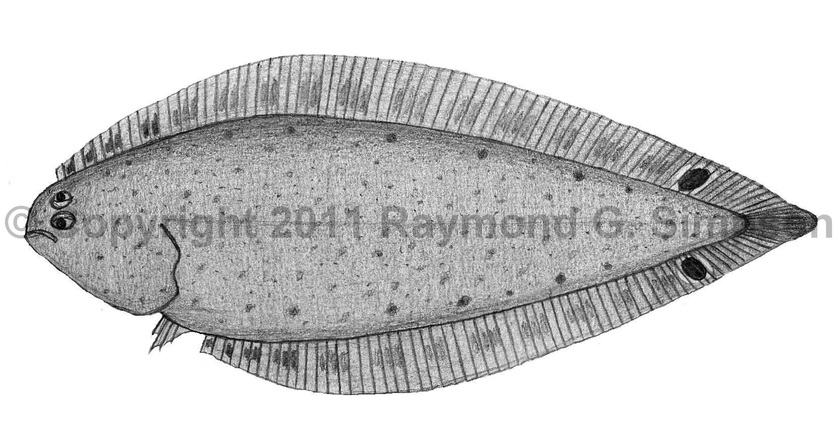
Common Name
Ocellated Tonguefish
Year Described
Böhlke, 1961
Identification
Dorsal Fin Rays: 75-79
Anal Fin Rays: 60-64
Pectoral Fin Rays: none
Pelvic Fin Rays: 4
Caudal Fin Rays: 10
Longitudinal Scale Rows: 58-64
Vertebrae: 43-44
Pterygiophore pattern (1st three interneural spaces): 1-4-2
Other diagnostic characters include: well developed pupillary operculum, membrane ostia present on dorsal and anal fins, ocular side lower jaw without fleshy ridge, and scales absent on blind sides of dorsal and anal fins.
Color
Very pale with numerous irregular and indistinct chromatophores over ocular surface, rarely with a couple faint crossbands. Peritoneum unpigmented. Dorsal and anal fins body colored with a single ocellated black spot on the posterior fifth of each fin. Blind side pale without melanophores.
Size
Adults from 25-40mm. Maximum size 57mm.
Habitat
Shallow coastal waters from 1-27m (usually <15m), on sandy bottoms near coral reefs and seagrass beds.
Range Map

Range
The Caribbean Sea: mostly insular localities from the Bahamas to the Lesser Antilles. Rarely from continental localities.
References
Munroe, T.A. 1998. Systematics and ecology of western Atlantic tonguefishes (Symphurus: Cynoglossidae: Pleuronectiformes). Fish. Bull. 96(1):1-182.
Munroe, T. A. 2003. Bothidae (Pp. 1885-1895), Scophthalmidae (Pp. 1896-1897), Paralichthyidae (Pp. 1898-1921), Poecilopsettidae (Pp. 1922-1923), Achiridae (Pp. 1925-1933), Cynoglossidae (Pp. 1934-1959). In: Carpenter. 2003. The living marine resources of the Western Central Atlantic v. 3.